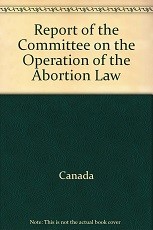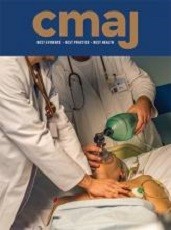Robin F Badgley, Denyse Fortin Caron, Marion G Powell

Abstract
The procedures set out for the operation of the Abortion Law are not working equitably across Canada. In almost every aspect dealing with induced abortion which was reviewed by the Committee, there was considerable confusion, unclear standards or social inequity involved with this procedure. In addition to the terms of the law, a variety of provincial regulations govern the establishment of hospital therapeutic abortion committees and there is a diverse interpretation of the indications for this procedure by hospital boards and the medical profession. These factors have led to: sharp disparities in the distribution and the accessibility of therapeutic abortion services; a continuous exodus of Canadian women to the United States to obtain this operation; and delays in women obtaining induced abortions in Canada.
Badgley RFB, Caron DF, Powell MG. (Report) Report of the Committee on the Operation of the Abortion Law. 1977;. Available from:

